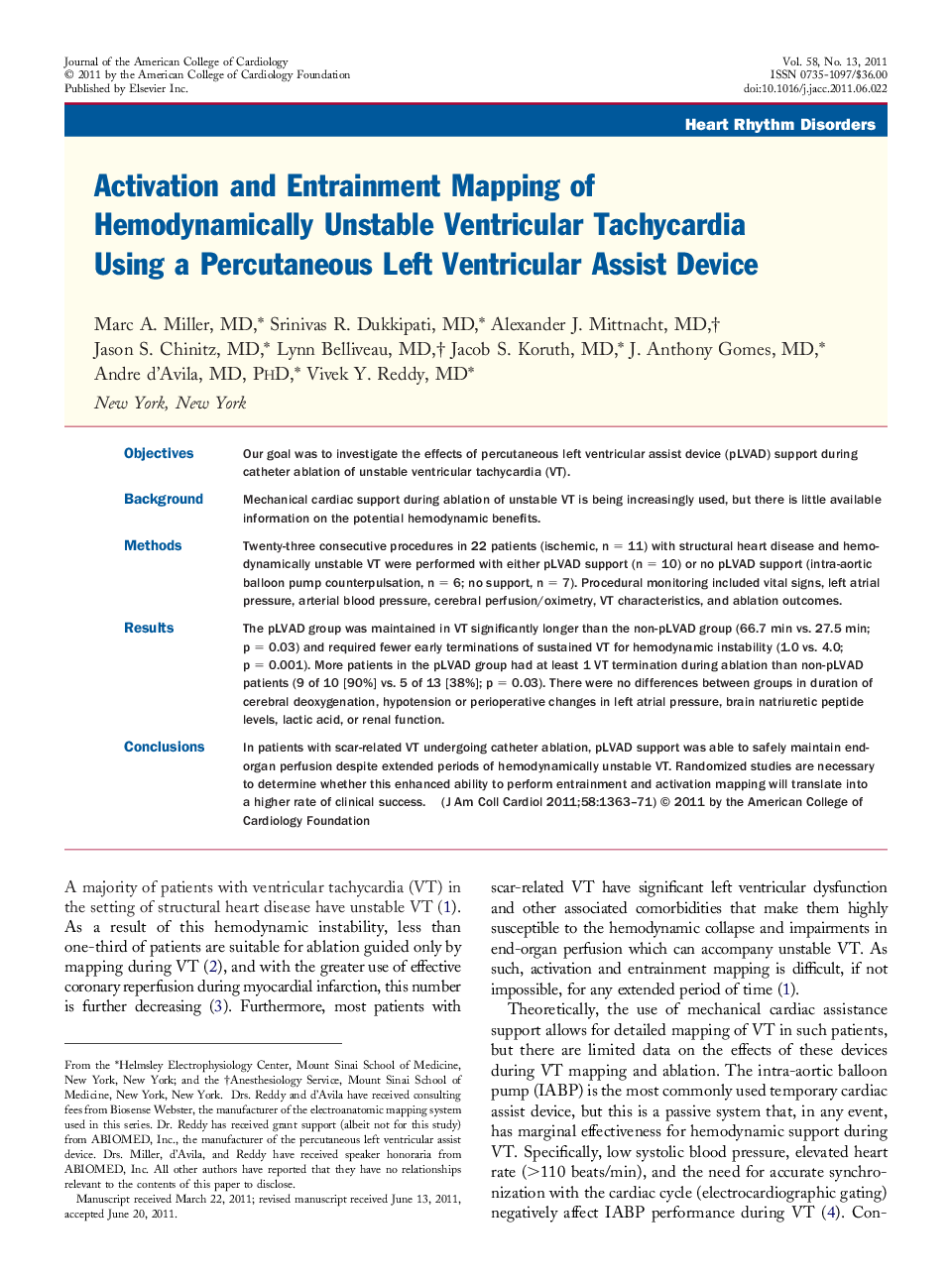| Article ID | Journal | Published Year | Pages | File Type |
|---|---|---|---|---|
| 2948552 | Journal of the American College of Cardiology | 2011 | 9 Pages |
ObjectivesOur goal was to investigate the effects of percutaneous left ventricular assist device (pLVAD) support during catheter ablation of unstable ventricular tachycardia (VT).BackgroundMechanical cardiac support during ablation of unstable VT is being increasingly used, but there is little available information on the potential hemodynamic benefits.MethodsTwenty-three consecutive procedures in 22 patients (ischemic, n = 11) with structural heart disease and hemodynamically unstable VT were performed with either pLVAD support (n = 10) or no pLVAD support (intra-aortic balloon pump counterpulsation, n = 6; no support, n = 7). Procedural monitoring included vital signs, left atrial pressure, arterial blood pressure, cerebral perfusion/oximetry, VT characteristics, and ablation outcomes.ResultsThe pLVAD group was maintained in VT significantly longer than the non-pLVAD group (66.7 min vs. 27.5 min; p = 0.03) and required fewer early terminations of sustained VT for hemodynamic instability (1.0 vs. 4.0; p = 0.001). More patients in the pLVAD group had at least 1 VT termination during ablation than non-pLVAD patients (9 of 10 [90%] vs. 5 of 13 [38%]; p = 0.03). There were no differences between groups in duration of cerebral deoxygenation, hypotension or perioperative changes in left atrial pressure, brain natriuretic peptide levels, lactic acid, or renal function.ConclusionsIn patients with scar-related VT undergoing catheter ablation, pLVAD support was able to safely maintain end-organ perfusion despite extended periods of hemodynamically unstable VT. Randomized studies are necessary to determine whether this enhanced ability to perform entrainment and activation mapping will translate into a higher rate of clinical success.
